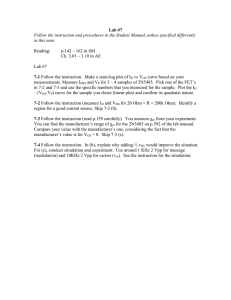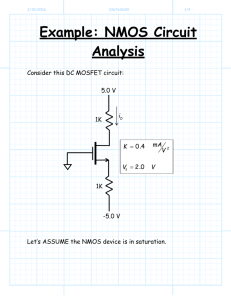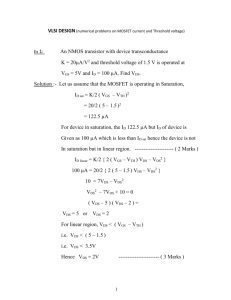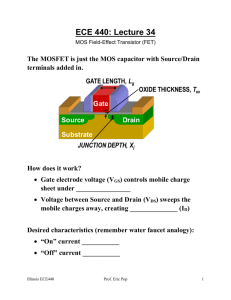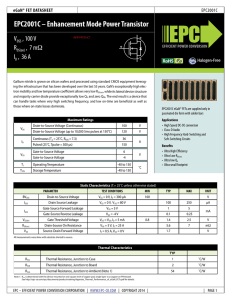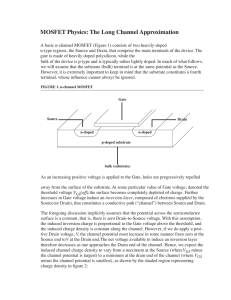The field effect transistor as a voltage controlled resistor
advertisement
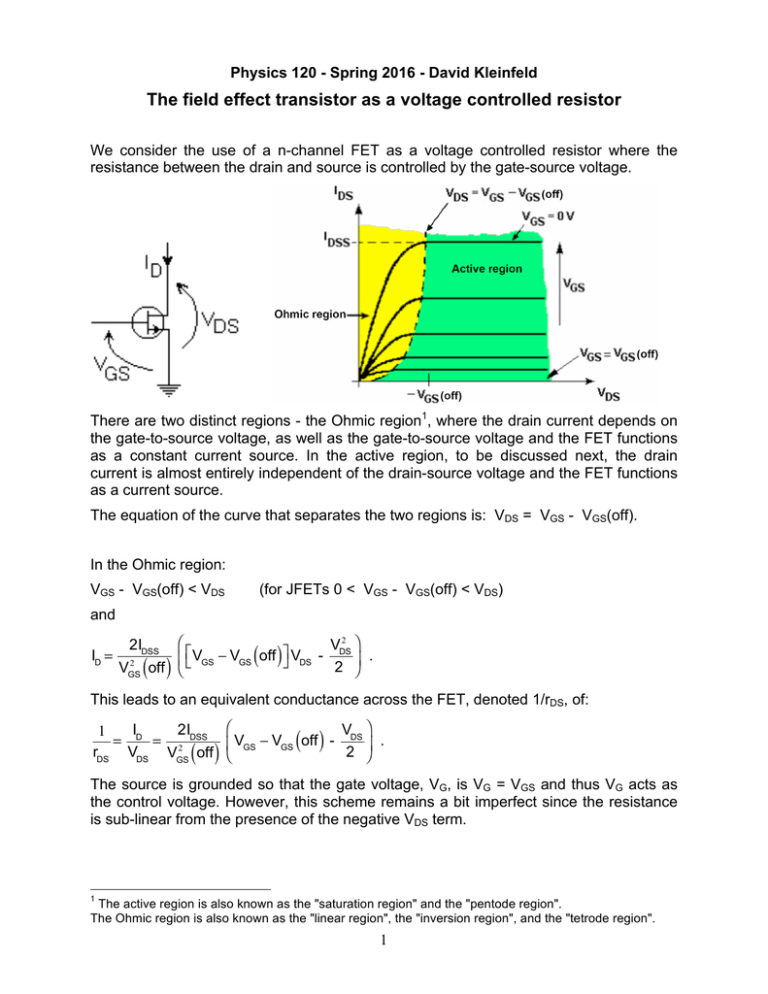
Physics 120 - Spring 2016 - David Kleinfeld The field effect transistor as a voltage controlled resistor We consider the use of a n-channel FET as a voltage controlled resistor where the resistance between the drain and source is controlled by the gate-source voltage. There are two distinct regions - the Ohmic region1, where the drain current depends on the gate-to-source voltage, as well as the gate-to-source voltage and the FET functions as a constant current source. In the active region, to be discussed next, the drain current is almost entirely independent of the drain-source voltage and the FET functions as a current source. The equation of the curve that separates the two regions is: VDS = VGS - VGS(off). In the Ohmic region: VGS - VGS(off) < VDS (for JFETs 0 < VGS - VGS(off) < VDS) and ID = 2 ⎛ ⎞ VDS ⎡ ⎤ V − V off V . ⎜ ⎣ GS GS DS ⎦ 2 ⎟⎠ off ⎝ 2IDSS 2 VGS ( ) ( ) This leads to an equivalent conductance across the FET, denoted 1/rDS, of: 1 rDS = ⎛ 2I V ⎞ ID = 2 DSS ⎜ VGS − VGS off - DS ⎟ . VDS VGS off ⎝ 2 ⎠ ( ) ( ) The source is grounded so that the gate voltage, VG, is VG = VGS and thus VG acts as the control voltage. However, this scheme remains a bit imperfect since the resistance is sub-linear from the presence of the negative VDS term. 1 The active region is also known as the "saturation region" and the "pentode region". The Ohmic region is also known as the "linear region", the "inversion region", and the "tetrode region". 1 The above non-linearity can be removed by adding an amount VDS/2 to the gate voltage. This is achieved using the following circuit: We replaced VGS = VG by the weighted sum of a control voltage, denoted VC, and the drop across the transistor, VDS. Using two equal resistors to form a voltage divider, we use Kirchhoff’s current law to write: 0= VGS − VC VGS − VDS + R R or VGS = VC + VDS 2 so that 1 rDS = ⎛ V + VDS ⎛V ⎞ 2I V ⎞ 2I ID = 2 DSS ⎜ C − VGS off - DS ⎟ = 2 DSS ⎜ C − VGS off ⎟ VDS VGS off ⎝ 2 2 ⎠ VGS off ⎝ 2 ⎠ ( ) ( ) ( ) ( ) Therefore 1/rDS is now a linear conductance, with 2 VGS(off) < VC < 0, so that 2 IDSS 1 0< < rDS VGS off . ( ) Note: 1. Adding the resistors reduces the control sensitivity by factor of two. 2. R should be large in value since 2 R shunts the drain-to source resistance and limits the maximum value of the source-to-drain resistance to rDS||2R. 3. One terminal of the resistor must be at a fixed potential, e.g., the source must be grounded. Otherwise the control voltage, VC, must be allowed to float. 4. The control voltage should be supplied from a low impedance source. 2


